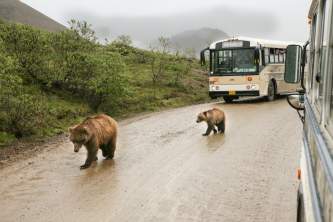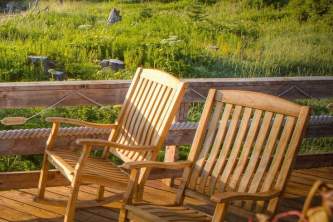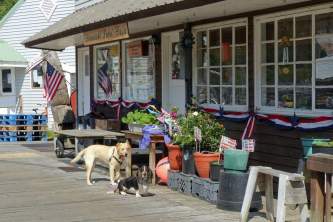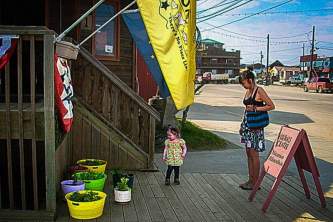Glacier Talk
From a Distance
Arete
Sharp, narrow ridges formed on a mountain by a glacier.
Bergschrund
The crevasse that separates the stagnant headwall ice from the flowing ice of the glacier. Many glaciological terms come from the Germans who first studied them.
Calving
Just as cows have calves, glaciers calve icebergs, chunks of ice that break off the glacier and fall into a sea, river, or lake, causing a thunderous roar, splash, and wave. Watch for calving at Child's Glacier near Cordova, or in Prince William Sound
Crevasse
An open crack in the glacier surface, sometimes gaping enough to swallow a person.

Erratic
A boulder swept down with an advancing glacier and deposited elsewhere as the glacier melted. The biggest erratics can weigh thousands of tons!
Firn or Neve
The area of glacier covered with snow throughout the year.
Ice Fall
Jumbled and broken ice which forms when a glacier flows over a steep drop-off.
Kettle
A very large block of ice, left behind as a glacier recedes, melts and forms either a pothole or, if filled with water, a lake. Mirror Lake just outside Anchorage is a kettle lake.
Nunatak
Mountain peaks or ridges which poke through the ice, forming islands within the glacier.
Serac
An isolated block of ice that juts straight up from the surface of a glacier, often hundreds of feet high.
Outburst Flood or Jökulhlaup
A tremendous release of water that was trapped behind or beneath a glacier. When the ice finally breaks it often causes catastrophic flooding. Lake George, on the Knik Glacier, did this annually from 1918-1966, until the glacier receded
Up Close
Glacier Flour
Very finely ground particles of rock, silt, or clay created by a glacier when its rock-filled ice scrapes over bedrock and which flow out from beneath a glacier in the meltwater.
Glacier Silt
The turquoise lakes you will see are colored by glacial silt suspended in the water. Glaciers scrape bedrock into fine, round particles of rock or clay which are then carried away by tides or rivers. Glacier flour colors lakes such as Portage Lake and Kenai Lake
Ice Geyser or "Bubbling Pond"
Flightseeing over glaciers south of Denali (Mt. McKinley), you may see fountains of glacial meltwater forcing their way up through the glacier's surface. These ice geysers can spurt refrigerator-sized chunks of ice ten feet into the air, or can bubble gently. Two of the most famous "bubbling ponds" are at the foot of the Ruth and Kanikula Glaciers
Ice Quake
When you hear the sound of muted thunder seeming to be miles away, it may be an ice quake, caused by ice shifting and grumbling inside the glacier. It can prompt calving.
Ice Sizzle
As an iceberg melts, listen for a crackling or sizzling sound like soda pop or Rice Krispies! Ice sizzle is caused by the release of air bubbles trapped during the glacier's formation decades, or even centuries, ago. Listen at Portage Lake, from the ice that comes to shore. Hear it all around in Prince William Sound.
Ice Worm
The only worms known to inhabit snow and ice, they are brown-black and only about 3 millimeters long. They feed off red algae, which grow on glaciers, and burrow in ice to hibernate.
Moulin (or Glacier Mill)
Look for channels of water which plunge down holes or tubes deep into the bowels of the glacier-it can be a chilling experience. French for mill, a moulin is so named for the loud, roaring noise made by the falling water.
Surge
A short period when meltwater beneath the glacier causes it to slide up to 100 times faster than normal. Surges of 300 feet a day have been recorded in Southeast Alaska.
Sun Cup
The richly textured, cup-shaped depressions you will see on the surface of some glaciers are caused by sun or wind abrasion.




